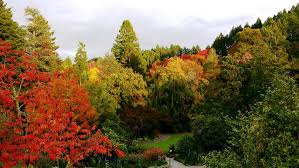Exploring the Beauty and Importance of Dartmoor

Introduction
Dartmoor National Park, located in Devon, England, is a stunning expanse of moorland that covers over 954 square kilometres. Designated as a national park in 1951, Dartmoor is renowned for its rugged landscapes, diverse wildlife, and rich cultural history. In recent years, the park has become increasingly important, with visitors flocking to its natural beauty and unique geological features, making it a critical area for conservation and tourism.
Key Features and Attractions
One of Dartmoor’s most iconic features is its granite tors, with Dartmoor Tor being the most famous among them, offering breathtaking views of the surrounding landscape. The park is also home to historic sites, including the remnants of ancient settlements and stone circles that date back over 3,500 years, showcasing Dartmoor’s significant human heritage.
Outdoor enthusiasts are drawn to Dartmoor for its extensive network of walking and cycling trails, including the popular Two Moors Way and the Dartmoor Way. The park’s varied terrain accommodates a range of activities such as rock climbing, horse riding, and even wild swimming. With its diverse ecosystems, Dartmoor supports a wealth of plant and animal life, making it a hotspot for biodiversity.
Recent Developments and Challenges
In 2023, Dartmoor has received attention not only for its natural attractions but also for ongoing environmental conservation efforts. Local authorities and conservation groups are working to combat threats posed by climate change, invasive species, and unsustainable tourism practices. New initiatives aim to preserve natural habitats while balancing visitor experiences, ensuring Dartmoor remains a vital ecological reserve. Additionally, recent discussions regarding public access have sparked debates, as stakeholders seek to protect Dartmoor’s landscapes while respecting local landowners’ rights.
Conclusion
Dartmoor National Park remains a vital resource for nature enthusiasts, conservationists, and history buffs alike. Its importance stretches beyond scenic beauty—Dartmoor serves as a sanctuary for wildlife and a critical area for ecological studies. As more visitors discover this enchanting landscape, it is essential to foster sustainable tourism practices to protect Dartmoor for future generations. With ongoing conservation efforts and a commitment to preserving its unique heritage, Dartmoor is set to continue inspiring and captivating all who venture into its wild heart.









